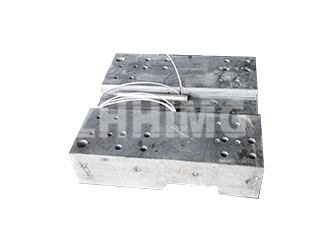As laser cutting technology pushes into the realm of femtosecond and picosecond lasers, the demands on the equipment’s mechanical stability have become extreme. The worktable, or machine base, is no longer just a support structure; it is the defining element of system accuracy. ZHONGHUI Group (ZHHIMG®) analyzes the fundamental reasons why high-density granite has become the superior, non-negotiable choice over traditional metal materials for high-performance laser cutting worktables.
1. Thermal Stability: Defeating the Heat Challenge
Laser cutting, by its very nature, generates heat. Metal worktables—typically steel or cast iron—suffer from a high coefficient of thermal expansion (CTE). As temperature fluctuates, the metal expands and contracts significantly, leading to micron-level dimensional changes across the table’s surface. This thermal drift directly translates to inaccurate cutting paths, especially over long periods or in large-format machines.
In contrast, ZHHIMG®’s Black Granite boasts an extremely low CTE. The material is inherently resistant to temperature changes, ensuring that the critical geometric dimensions of the worktable remain stable even during intense, prolonged operation. This thermal inertia is vital for maintaining the nanometer-level precision required by modern laser optics.
2. Vibration Damping: Achieving Perfect Beam Control
Laser cutting, particularly high-speed or pulsed laser systems, generates dynamic forces and vibrations. Metal resonates, amplifying these vibrations and causing minor jitters in the system, which can blur the laser spot and degrade cut quality.
The structure of ZHHIMG®’s high-density granite (up to ≈3100 kg/m3) is intrinsically suited for superior vibration damping. Granite naturally absorbs mechanical energy and dissipates it quickly. This quiet, stable foundation ensures that the delicate laser focusing optics and high-speed linear motors operate in a vibration-free environment, maintaining the precision of the beam placement and the integrity of the cut edge.
3. Material Integrity: Non-Corrosive and Non-Magnetic
Unlike steel, granite is non-corrosive. It is immune to the coolants, cutting fluids, and atmospheric humidity common in manufacturing environments, ensuring the worktable’s longevity and geometric integrity remain intact without the risk of rust or material degradation.
Furthermore, for equipment integrating highly sensitive magnetic sensing or linear motor technology, granite is non-magnetic. This eliminates the risk of electromagnetic interference (EMI) that metal bases can introduce, allowing the sophisticated positioning systems to function flawlessly.
4. Processing Capability: Building the Massive and Precise
ZHHIMG®’s unparalleled manufacturing capability eliminates the size restrictions that often plague metal-based tables. We specialize in producing single-piece monolithic granite tables up to 20 meters in length and 100 tons in weight, polished to nanometer flatness by our master craftsmen. This allows laser machine builders to create super-large format cutters that maintain single-piece integrity and ultra-precision across their entire working envelope—a feat unattainable with welded or bolted metal assemblies.
For manufacturers of world-class laser cutting systems, the choice is clear: the unmatched thermal stability, vibration damping, and monolithic precision of a ZHHIMG® Granite Worktable provide the ultimate foundation for speed and accuracy, turning micron-level challenges into routine results.
Post time: Oct-09-2025

